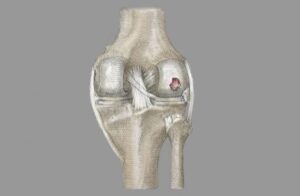Clinical documentation is vital in healthcare as a comprehensive record of a patient’s medical history, treatments, and outcomes. Accurate and detailed clinical documentation is crucial for effective communication among healthcare providers, billing and coding accuracy, legal compliance, and improved patient care. However, many healthcare organizations struggle with subpar clinical documentation practices. This article will explore key strategies for improving clinical documentation to enhance patient care and organizational efficiency.
Key Strategies For Improving Clinical Documentation
Educating Healthcare Providers on Documentation Standards
One of the fundamental strategies for improving clinical documentation is ensuring that healthcare providers are well-educated on documentation standards. This involves training clinicians on the importance of accurate and detailed documentation, coding guidelines, and legal requirements. By providing regular educational sessions, workshops, and ongoing feedback, healthcare organizations can empower their providers to consistently document relevant information and comply with industry standards.
Implementing Electronic Health Record (EHR) Systems
The transition from paper-based records to electronic health record (EHR) systems has revolutionized clinical documentation. EHRs offer numerous advantages, including improved accessibility, legibility, and real-time data sharing. Healthcare organizations should invest in user-friendly EHR platforms that facilitate streamlined documentation workflows, incorporate clinical decision support tools, and offer templates for comprehensive documentation. Properly implemented EHR systems can significantly enhance documentation accuracy and efficiency.
Standardizing Documentation Templates and Forms
Standardizing documentation templates and forms is a crucial step toward improving clinical documentation. By creating predefined templates that capture essential information for specific clinical encounters, healthcare providers can ensure consistent and comprehensive documentation. Templates should be designed in collaboration with healthcare professionals, reflecting best practices, relevant coding requirements, and compliance guidelines. Standardization minimizes documentation variability, reduces errors, and improves data retrieval for research and quality improvement initiatives.
Encouraging Timely and Concurrent Documentation
Timely and concurrent documentation is a critical strategy for improving clinical documentation. Encouraging healthcare providers to document patient encounters in real-time or shortly after ensures accuracy and minimizes the risk of missing important details. Concurrent documentation promotes better recall and eliminates the need to retrospectively document encounters, often leading to inaccuracies and omissions. Implementing EHRs with voice recognition or mobile apps can further facilitate real-time documentation, making it more efficient for providers.
Also Read:
Enhancing Interdisciplinary Communication
Collaboration and effective communication among healthcare professionals is vital for comprehensive clinical documentation. Enhancing interdisciplinary communication improves the accuracy and completeness of documentation, as it allows for a holistic view of the patient’s condition and treatment. Regular multidisciplinary team meetings, clear communication channels, and collaborative documentation platforms can facilitate information exchange and promote a shared understanding of the patient’s healthcare journey.
Implementing Clinical Decision Support Tools
Clinical decision support tools integrated within EHR systems can significantly improve clinical documentation. These tools provide real-time prompts and reminders to healthcare providers, ensuring the inclusion of relevant information and adherence to best practices. Decision support tools can range from automated alerts for drug-drug interactions to reminders for preventive screenings or evidence-based treatment guidelines. By leveraging these tools, healthcare organizations can enhance documentation accuracy and promote evidence-based care.
Conducting Regular Documentation Audits
Regular documentation audits are essential for identifying areas of improvement and ensuring compliance with coding and billing guidelines. By reviewing a sample of clinical documents, healthcare organizations can assess documentation quality, identify deficiencies patterns, and provide targeted feedback and training to healthcare providers. Audits should be conducted by qualified professionals, such as clinical documentation improvement specialists or coding professionals, to ensure thorough and accurate assessments.
Promoting a Culture of Documentation Excellence
Creating a culture of documentation excellence is essential for sustained improvement in clinical documentation practices. Healthcare organizations should establish clear expectations for documentation quality and provide recognition and rewards for providers who consistently demonstrate excellent documentation practices. This can be achieved through regular performance evaluations, acknowledging providers who excel in documentation. And fostering a supportive environment where providers feel encouraged to improve their documentation skills. Leadership should lead by example, emphasizing the importance of accurate and comprehensive documentation and actively participating in educational initiatives. Healthcare organizations can foster a commitment to high-quality documentation across the board by promoting a culture of documentation excellence.
Collaboration with Coding and Billing Departments
Close collaboration between clinical staff, coding professionals, and billing departments is crucial for accurate and effective clinical documentation. Regular communication and feedback loops should established to address documentation challenges, clarify coding guidelines, and ensure accurate reimbursement. Coding and billing professionals can provide valuable insights into documentation requirements, help resolve documentation deficiencies, and ensure compliance with coding standards. By fostering collaboration, healthcare organizations can optimize documentation practices for both clinical and financial purposes.
Conclusion
In conclusion, clinical documentation is a crucial aspect of healthcare that impacts patient care, quality of care, and reimbursement. By implementing key strategies for improving clinical documentation, healthcare providers can enhance the accuracy and completeness of patient records, reduce errors and omissions, and ensure that they are properly reimbursed for the services they provide. These strategies include using electronic health records (EHRs). Providing staff training and education, establishing clear documentation policies and procedures, and engaging patients in their care. By prioritizing clinical documentation and implementing these strategies, healthcare providers can improve patient outcomes, reduce costs, and enhance the overall quality of care.









